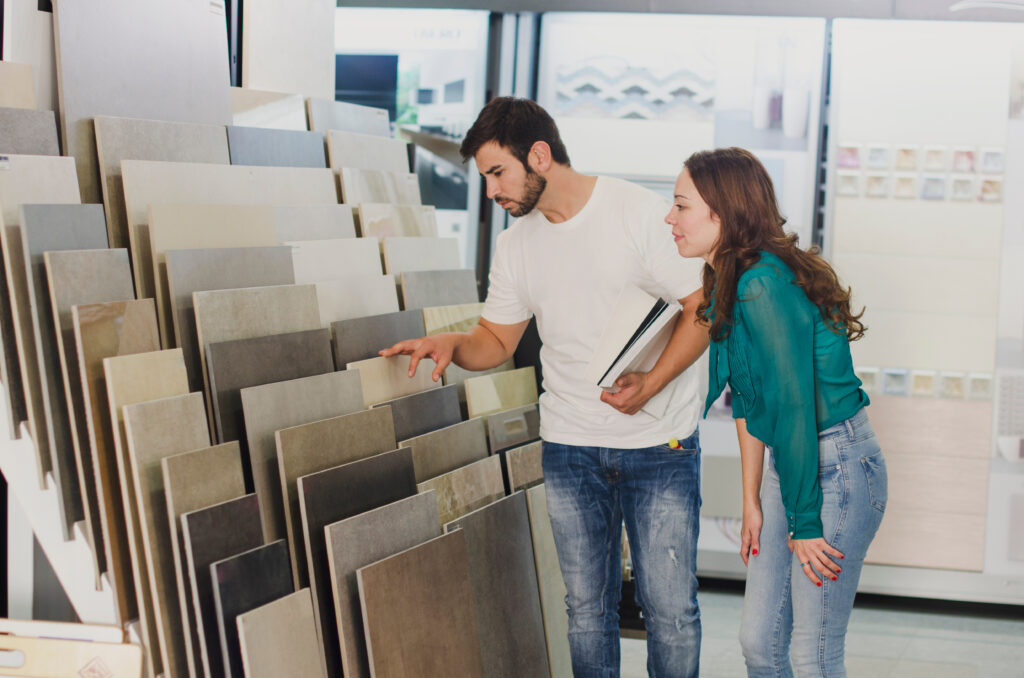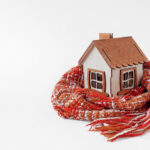When we’re talking about renovation work or new builds, the choice of materials plays a key role in terms of aesthetic quality, durability and the overall features of the environments. One of the many flooring options that is often nominated is the term “ceramic” as an alternative to porcelain stoneware. In reality, “ceramic” is an overall definition of natural earthy products, cold forged and heat consolidated. The most exact definitions, therefore, depend on the compactness of the fired material, that is, the percentage of residual porosity after the firing cycle. So, products for wall cladding are known as “double-fired”, usually for bathrooms and kitchens, produced with two successive firings with a residual porosity in excess of 10%. For flooring, there is a wide range of “single firing” products which are more solid than the double-firing because they have residual porosity of between 0.5% and 10%, and “porcelain stoneware”, now the most resistant and widespread product, with a residual porosity % below 0.5%. It is important to understand the differences between these alternative products in order to make an informed choice which suits the specific needs of each individual project. Below are some of the features of these different options, with particular focus on the distinction between a “single-fired ceramic” solution (often called “ceramic”) and a raised flooring in porcelain stoneware.

The differences between single-fired ceramic and porcelain stoneware raised flooring
Even though we’re talking about materials which are often confused with one another, porcelain stoneware raised flooring has clearly defined characteristics and doesn’t always resemble those of ceramic:
- Composition and production: the single-fired ceramic is produced by firing clay at lower temperatures than those used for porcelain stoneware and this procedure makes it more porous and less resistant. Porcelain stoneware, on the other hand, is achieved with grinding, pressing and firing a smooth blend of clay, sand, kaolins and feldspars at very high temperatures, a process which produces a dense, compact and resistant material, with low porosity and is ideal for raised flooring.
- Resistance and durability: the low porosity of porcelain stoneware makes it incredibly resistant to chemical agents, is humidity and dirt proof, but is also resistant to mechanical stress caused by high frequency usage. The result is a highly durable material that does not wear. On the contrary, ceramic generally requires more maintenance and can be more susceptible to stains and wear over time, especially in more demanding environments. Due to its high porosity level, the single-fired ceramic is more absorbent and subject to chipping and cracks, especially when placed on a base that has not previously been levelled.
- Design: both the single-fired ceramic and the raised flooring porcelain stoneware offer a wide range of style options. The former is generally appreciated for the variety of colours and designs which can be used to create it. It can, however, only be used for screed or wall gluing, while the porcelain stoneware can be used, not only with gluing, but also for more technical solutions like the porcelain stoneware raised flooring. Porcelain stoneware is highly versatile in this environment thanks to the innovative print technologies that accurately reproduce the aesthetic characteristics of other materials. It is, therefore, possible with porcelain stoneware to combine durability and an authentic look, achieving a realistic replica of textures and finishes such as natural stone, wood, quartz, resin, marble and many others.
- External installation: the choice of porcelain stoneware is also ideal for external floating paving, given the specific needs of outdoor environments like resistance to atmospheric agents. Single-fired ceramic is not recommended for external installations due to its porosity, while a porcelain stoneware raised flooring is generally more preferable.
In conclusion, both materials come with pros and cons, but the solution of porcelain stoneware raised flooring often wins over thanks to its resistance, durability and ability to adapt to a wide range of aesthetic needs. If you are looking for a flooring that can resist the challenges of high-traffic environments or which requires little maintenance over the years, porcelain stoneware could be the ideal choice for your raised flooring project.
In order to make an informed choice capable of offering beauty and practicality to the floor you are designing, contact an expert before making your final choice.



